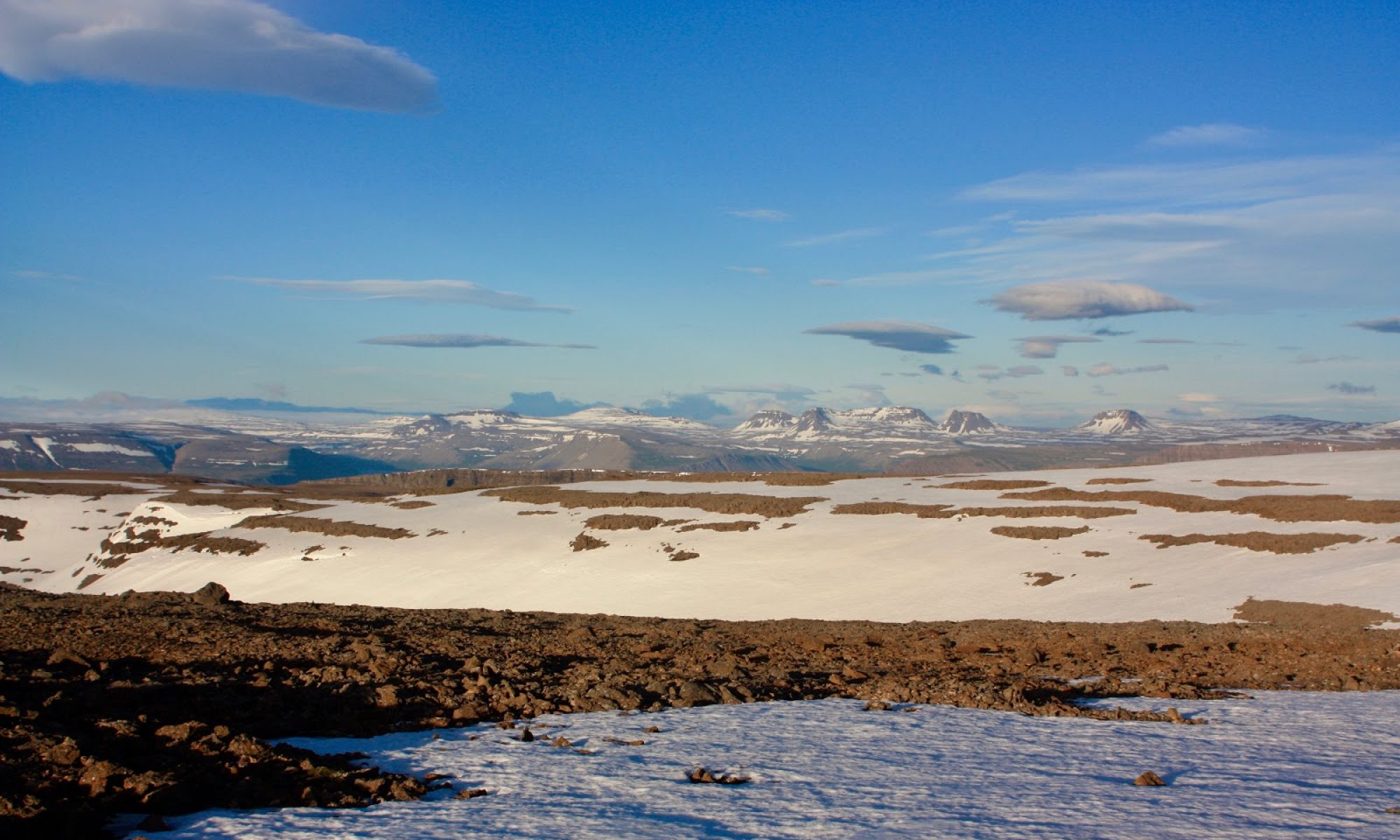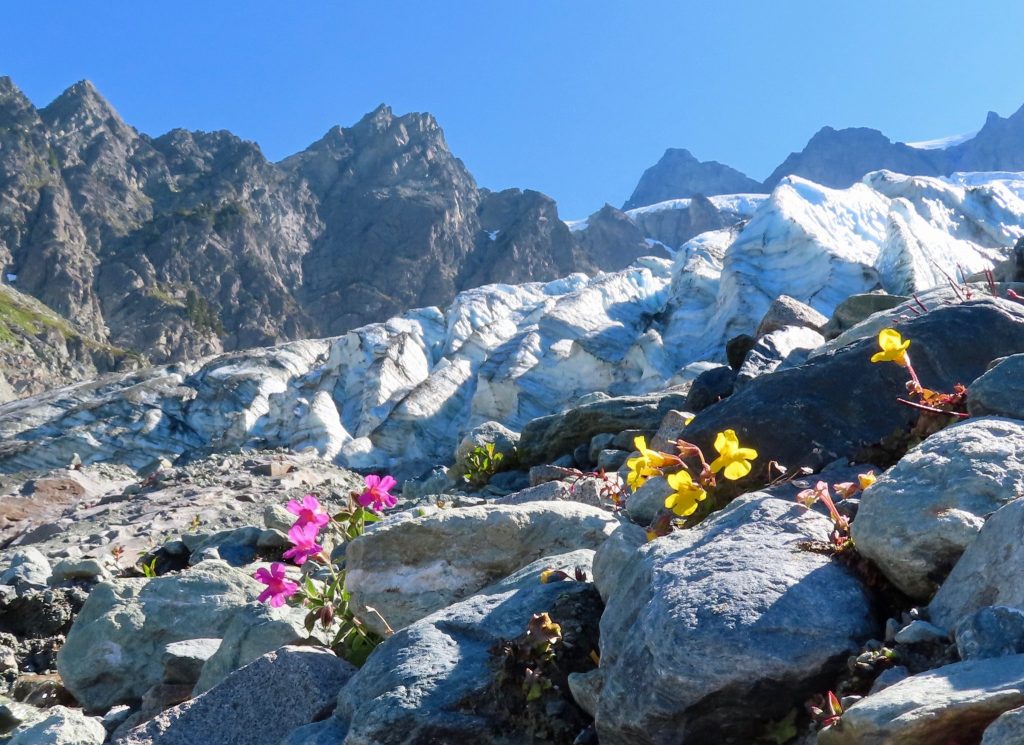
Let me introduce you to some friends of mine, delightful fellows, full of the joy of life. They live at the terminus of the Lower Curtis Glacier, on the jagged western flank of Mount Shuksan, in the North Cascades of Washington state. My bright yellow friend is Mimulus tilingii; my vibrant purple friend is Mimulus lewisii. More casually, they are known as Monkeyflowers. Specifically, they are the Great Purple Monkeyflower and the Mountain Monkeyflower.
I visit them once a year, and both tilingii and lewisii appear to be perfectly happy in the harsh environment of the glacial moraine, which is, essentially, an unconsolidated heap of rubble left behind by a retreating glacier. Some of them, seeking out a gentler neighborhood, choose lush meadows nearby. But whether they choose the moraine or the meadow, my friends are routinely buried under monumental amounts of snow, and they see daylight for just a few months of the year. It’s not any easy place to live.
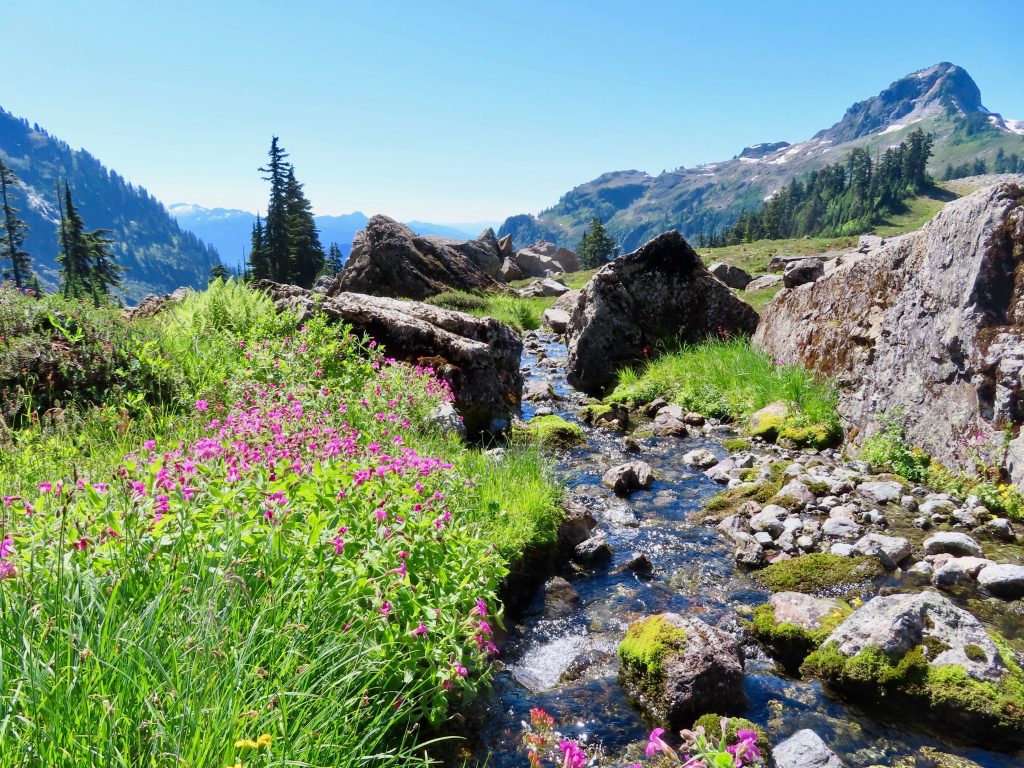
Although Monkeyflowers are well-suited to the hardscrabble life, they won’t hesitate to choose a cushier location, should one be available. Throughout the Cascades, in the lowlands as well as they highlands, I’ve seen them perched on tiny ledges beside or behind a waterfall; the best real estate a flower could ask for. In this regard, they remind me of a happy-go-lucky traveler who can spread a bivy sack on the barest and most exposed piece of ground and be content, yet can also enjoy a luxurious bed at a five-star resort.
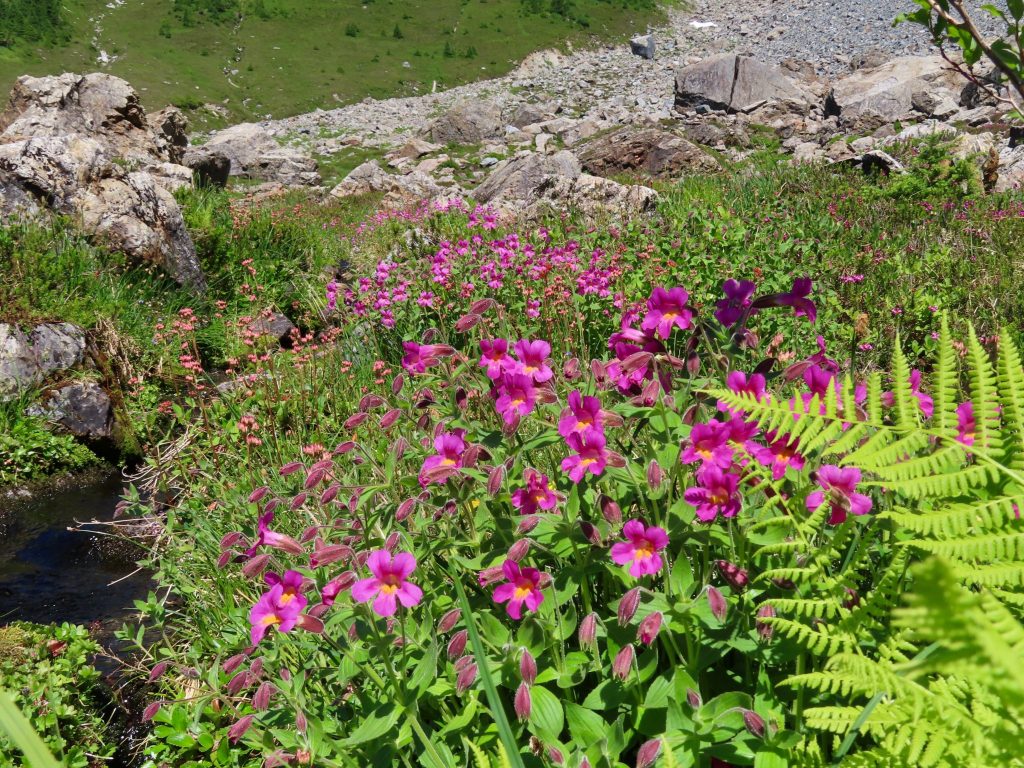
Of all the places I’ve seen Mimulus, none was more memorable than a verdant meadow near the Lower Curtis Glacier, where both yellow and purple Monkeyflowers laid claim to the best spots along a splendid creek that threaded a rock garden. I fell in love with this place, and I make an annual pilgrimage to it. The meadow hosts a party of alpine flowers, and in late August the Monkeyflowers are the life of the party.
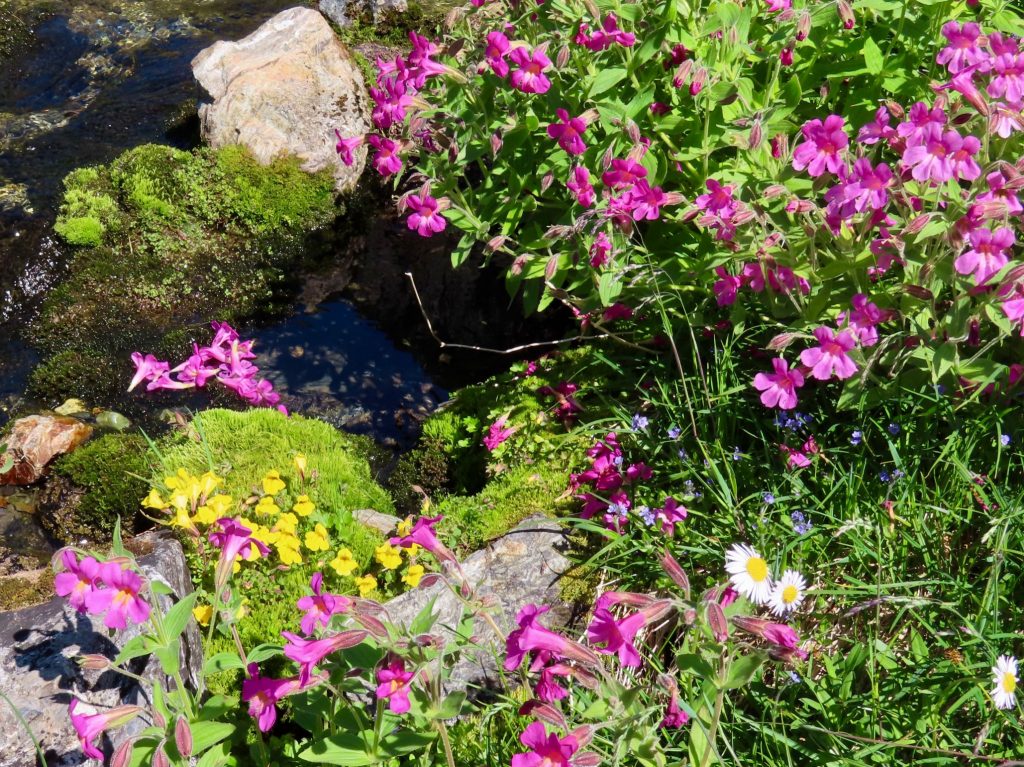
The Mimulus sisters have a cousin from California known as Mimulus nanus. This sun-loving Californian cousin lives along the eastern flank of the Sierra Nevada mountains, in a marvelous volcanic landscape called the Mono Craters. I’ve seen a profusion of gorgeous violet Mimulus nanus growing out a field of loose pumice. It didn’t seem like a growing medium that could support anything at all, and yet the monkeyflowers were happy, along with Gray’s lupine. It was hard to fathom how the tiny plants could take root there, much less thrive.
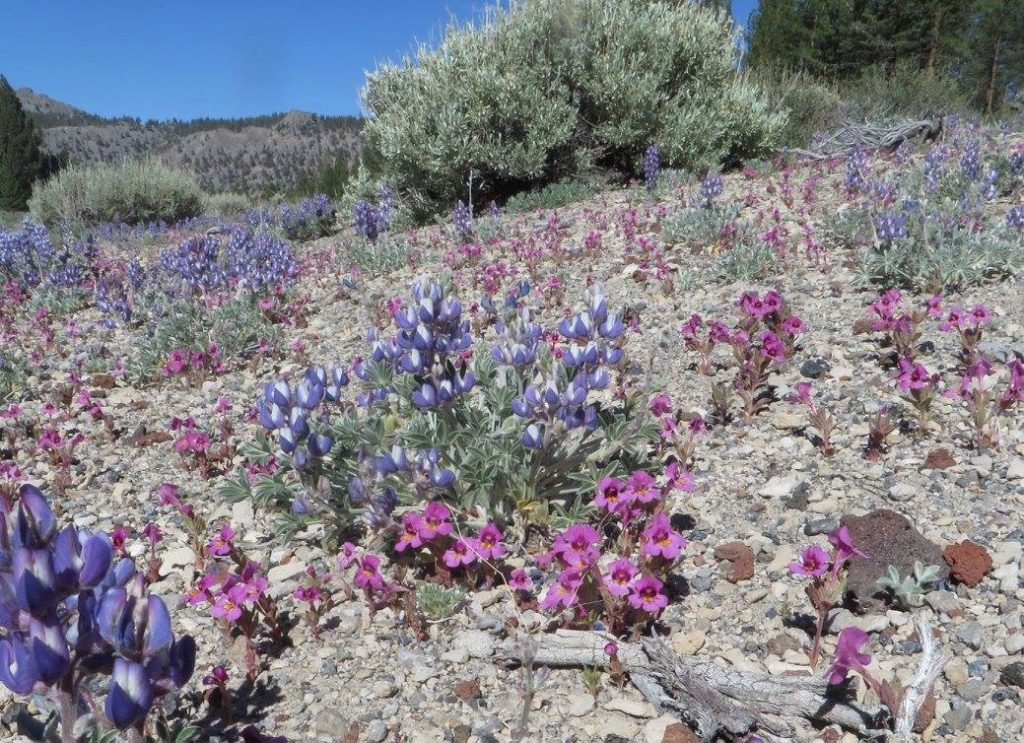
And yet another place Monkeyflowers live: a crack in a south-facing cliff of basalt on the eastern end of the Columbia River Gorge, a place that gets only about 15 inches of annual precipitation and bakes in a level of heat that can be every bit as extreme as the alpine cold of a glacial moraine that is buried in snow for eight or nine months of the year. The Monkeyflowers in the gorge don’t grow out in the open. The common name of these beauties is the Seep Monkeyflower, and as their common name indicates, they prefer to be near a seep or a creek. Any little crack will do, as long as there is some water.

It is a scrappy plant. A resilient plant. A remarkable plant. Here are some cool things to know about the Monkeyflower: It can thrive in inhospitable conditions, such as on the threshold of hot springs, or in serpentine soils that would kill most plants. It is highly adaptable to wide range of harsh climactic conditions and in soils that are heavy-laden with minerals or are just plain impoverished. In fact, Monkeyflowers make themselves at home in the snowiest place in North America, and in some of the hottest corners in the Mojave Desert. It is a pioneer plant in places that are bereft of life for either natural or man-caused reasons, such as glacial moraines or contaminated and toxic mine tailings.
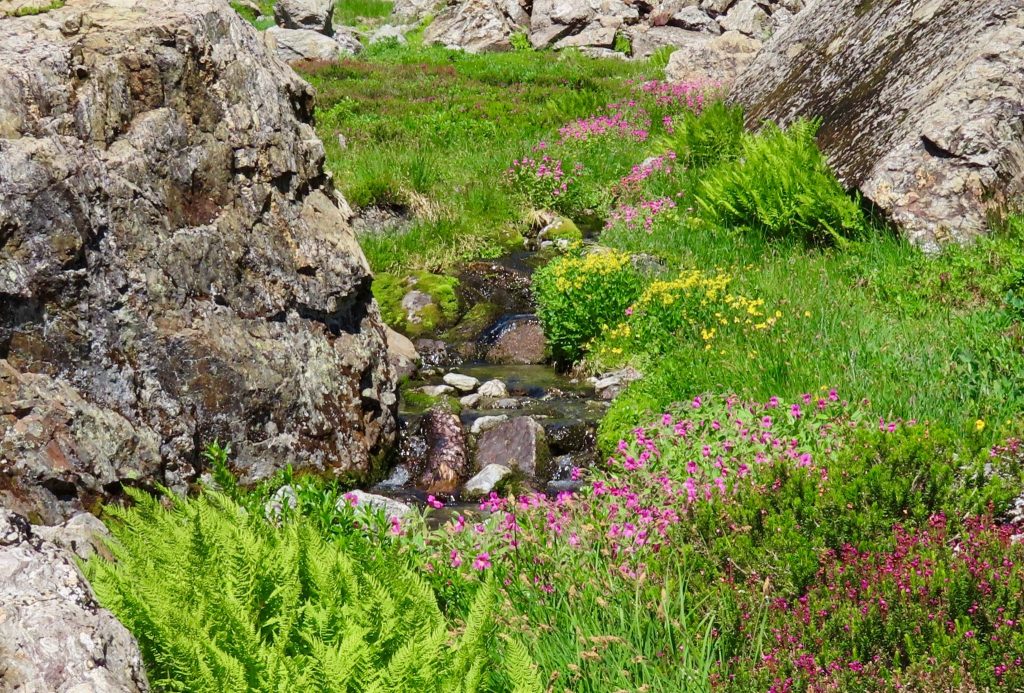
It’s a humble plant, but it harbors a kind of greatness, as humble little plants often do. Its greatness has not been lost on botanists and those who conduct genetic research. In recent years, it has become a bit of a darling to scientists who study plant evolution and adaptation. In fact, if you want to find a hopping good party of cheerful botanists, you might want to find an annual conference of Mimulus researchers. There are many hundreds of scientific papers written about Mimulus guttatus, the Seep Monkeyflower.
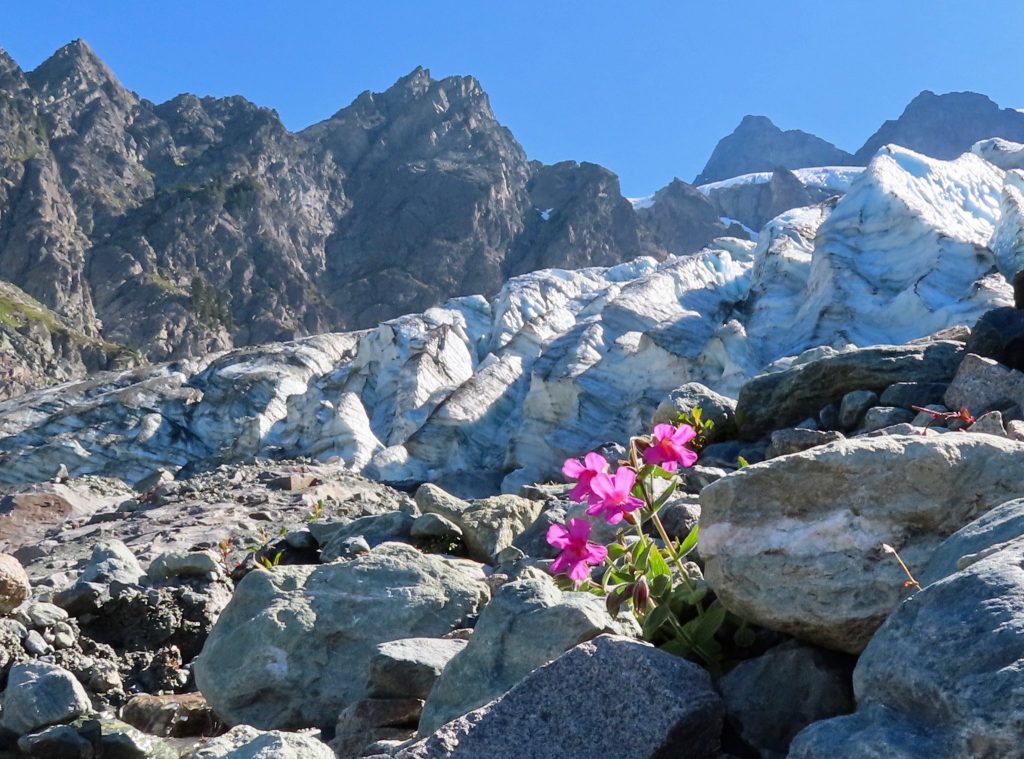
So, why is the Monkeyflower such a star? Multiple reasons. First of all, Monkeyflowers grow fast, produce lots of seeds, and have a simple and completely sequenced genome — all traits that make them ideal for genetic study. And, to quote from an article by Elizabeth Pennisi in Science magazine, “their explosion of flower colors and forms, diverse lifestyles, and extraordinary hardiness… have seduced researchers studying plant evolution and adaptations.”
What kind of research have these scientists been seduced into conducting? And what, exactly, does it mean for a species of flower to have diverse lifestyles? Well, in addition to living successfully in drastically different environments, Monkeyflowers exhibit a range of local variation in terms of color and pattern, bloom time, and other characteristics. It turns out that it’s an excellent species to study in terms of genetic mutation and natural selection.
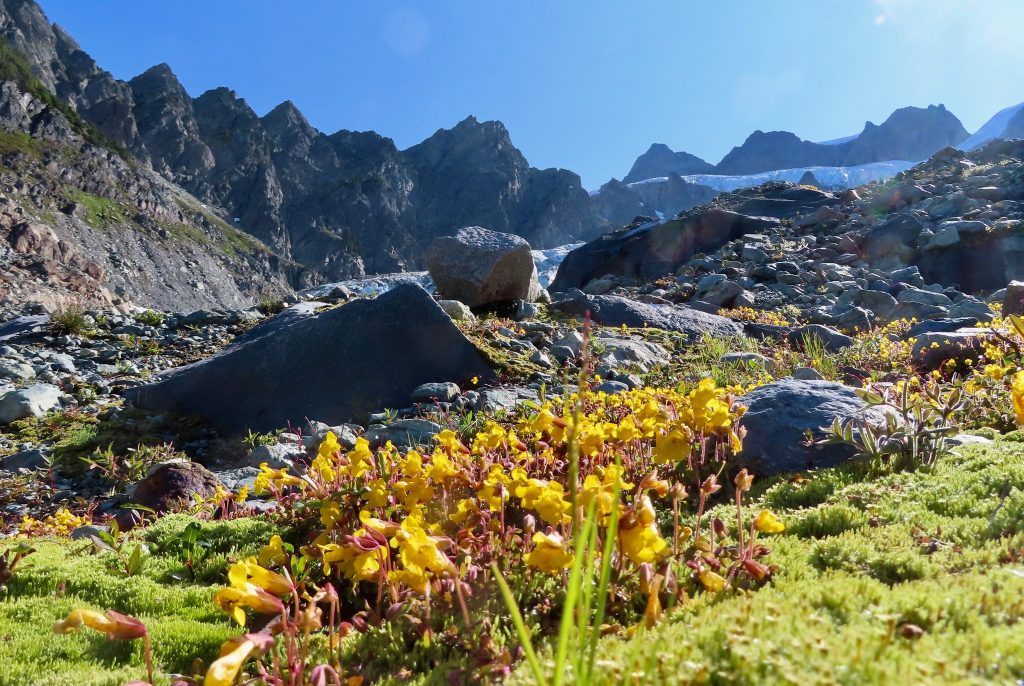
For example, researchers have recently discovered that within a single patch of Mimulus guttatus there will be individual plants with different flowering times, flower sizes, and amount of seed production. The later-blooming plants prefer wet years, while the early bloomers do their best in years when drought makes an early bloom crucial. Both variants coexist in the same population, and seem to have evolved simultaneously, in a process called fluctuating selection.
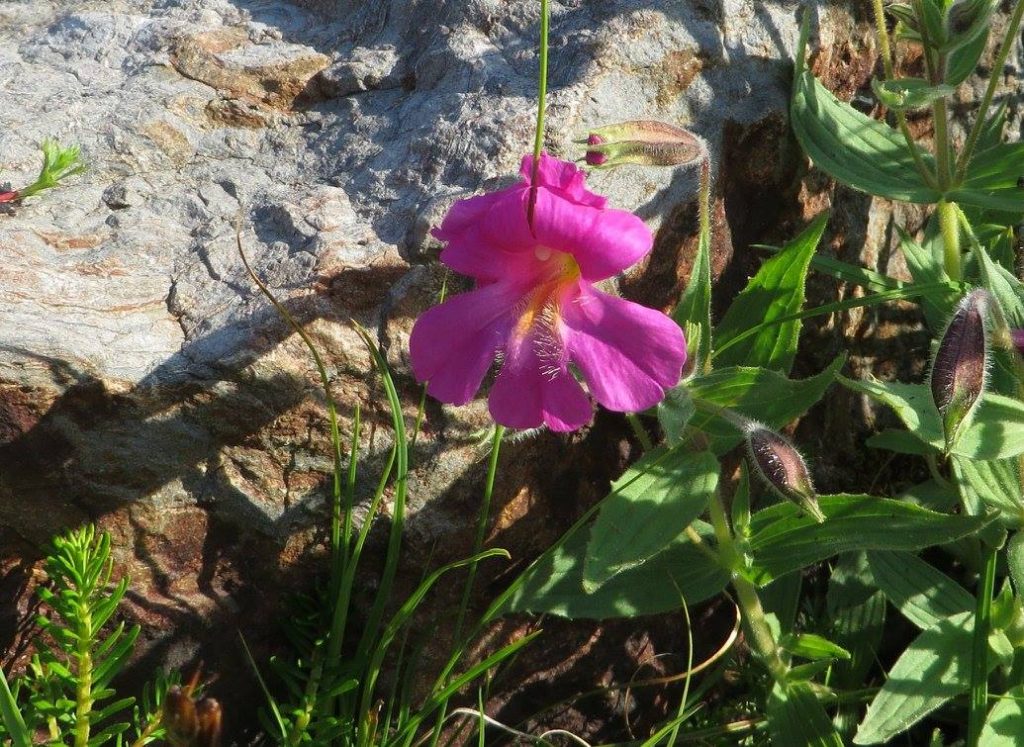
In a time when changing climate is disrupting formerly predictable patterns of precipitation, when even atmospheric jet streams and ocean currents are increasingly unsure of themselves and what they will do, it seems that one path to resilience is to be prepared for anything. When it isn’t quite clear (to either us or the flowers) how things will go from year to year, and when the only sure bet is an increase in weather anomalies, Monkeyflowers demonstrate the peculiar capability of evolving in multiple directions at the same time. Quite a trick! So don’t be fooled by the simple appearance and meager genome of such a humble little gravel-dwelling flower. It’s got a plan. Better, perhaps, than our plan.
